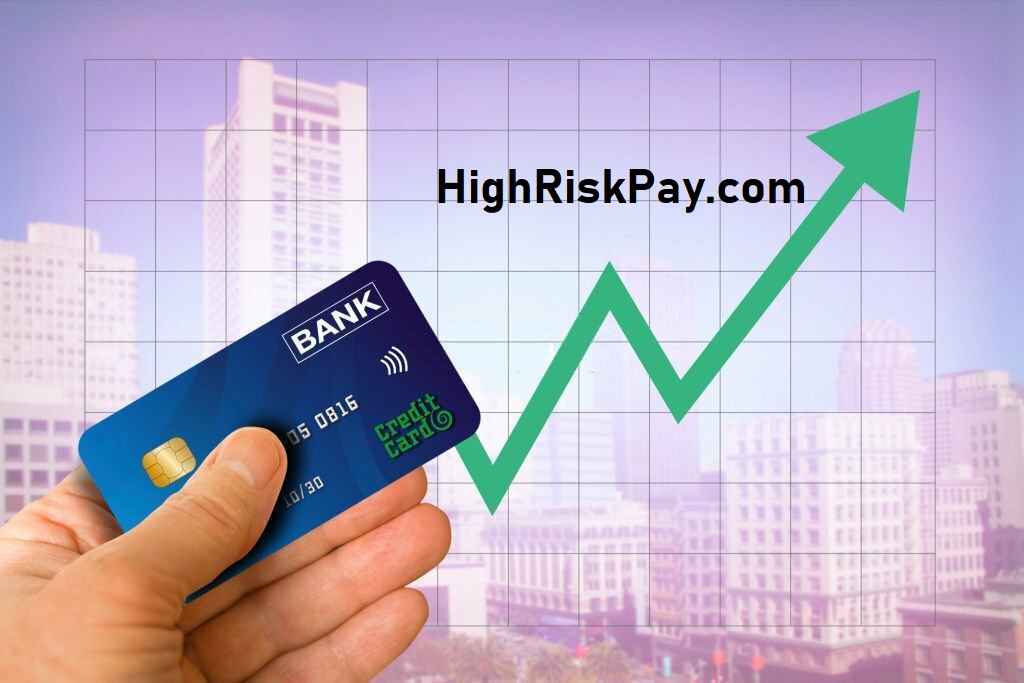High Risk Merchant Account at HighRiskPay.com: In the dynamic global of e-commerce and online business, accepting bills is the lifeblood of any corporation. However, for a few groups, the path to securing a reliable and effective charge processing answer may be extra hard. This is in which the concept of an excessive-hazard merchant account comes into play. In this comprehensive manual, we can demystify high-hazard service provider debts, explore their significance, and shed mild on how corporations navigate this specialised area.
What is a High Risk Merchant Account?
High Risk Merchant Account at HighRiskPay.com is a specialized solution tailored for businesses that face unique challenges and higher levels of risk in their operations. These challenges can be due to various factors, such as the industry they operate in, the nature of their products or services, credit history, or their previous payment processing track record. In essence, a high-risk merchant account is a lifeline for businesses that might struggle to secure a conventional payment processing solution.
It provides a way for these businesses to accept payments while managing and mitigating the specific risks associated with their operations. It’s a key to keeping their business viable, compliant, and trustworthy in the eyes of customers, despite the hurdles they might face. Explore more articles on financial solutions and business strategies at Life Looke.
Understanding High Risk Merchant Accounts
An excessive-risk merchant account is a specialized payment processing solution designed for agencies that fall into the magnificence of excessive danger. But what exactly makes an enterprise a high hazard in the eyes of price processors and monetary establishments? Several elements contribute to this type:
Industry Type: Some industries, which consist of online gaming, adult enjoyment, or prescribed drugs, inherently convey a higher chance due to regulatory and legal worries.
Chargeback Risk: Businesses with a higher likelihood of chargebacks, such as those in the travel industry, may be categorized as high risk.
Credit History: Poor credit history of business owners can also lead to a high-risk classification.
Payment Processing History: Previous issues with payment processing, including a history of chargebacks or fraud, can contribute to a high-risk label.
The Significance of High-Risk Merchant Accounts
For businesses categorized as high risk, obtaining a high-risk merchant account is often a necessity. Without a suitable payment processing solution, these businesses may find it challenging to accept payments from customers. Here are some key reasons why high-risk merchant accounts are significant:
Risk Mitigation: High-risk merchant accounts are designed to mitigate the specific risks associated with high-risk industries. They often come with additional security measures and monitoring.
Legal Compliance: Some high-risk industries require businesses to comply with stringent regulations. High-risk merchant accounts can help businesses meet these legal requirements.
Business Viability: Without a reliable payment processing solution, high-risk businesses may struggle to survive in a competitive market. High-risk merchant accounts ensure they can continue to operate.
Customer Trust: A secure and reliable payment processing system is crucial for earning and maintaining customer trust, even in high-risk industries.
The Challenges of High-Risk Merchant Accounts
While high-risk merchant accounts offer essential solutions for businesses, they also come with their fair share of challenges. Understanding these challenges is key to effectively Navigating the excessive-threat landscape
Higher Processing Fees
One of the primary challenges of high-risk merchant accounts is the higher processing fees. Payment processors charge more to compensate for the additional risks associated with these businesses.
Rolling Reserves
Many high-risk merchant accounts require businesses to maintain rolling reserves. This means that a percentage of each transaction is held in reserve for a specified period, typically to cover potential chargebacks.
Limited Options
High-chance businesses may have constrained options about deciding on a charge processor. Not all processors are inclined to work with high-threat industries, which can limit a business’s alternatives.
Stricter Monitoring
High-risk merchant accounts often involve stricter monitoring of transactions and business activities. This can be both a pro and a con, as it offers added security but may also require more documentation and oversight.
Navigating the High-Risk Landscape
For organizations in excessive-hazard industries, efficaciously navigating the high-hazard landscape is critical for lengthy-time period viability and boom. Here are some strategies and considerations for doing just that:
1. Partner with Reputable Payment Processors
Choosing a reputable payment processor that specializes in high-risk merchant accounts is essential. Look for providers with a track record of working with businesses in your industry and a reputation for reliability.
2. Implement Strong Security Measures
Security is paramount for high-threat companies. Implement strong security measures to protect your clients’ statistics and reduce the risk of fraud or chargebacks.
3. Monitor and Minimize Chargebacks
Proactively monitor and address chargebacks to minimize their occurrence. Implement effective customer service and dispute resolution processes.
4. Maintain Compliance
Stay updated with the policies and compliance requirements in your industry. Failing to satisfy those standards may have serious effects on your business.
5. Diversify Payment Options
Consider offering a variety of payment options to cater to different customer preferences. This can help increase sales and reduce the risk of payment issues.
The Future of High-Risk Merchant Accounts
As the business landscape continues to evolve, the future of high-risk merchant accounts is likely to see several developments:
Increased Regulation: With growing concern about data security and fraud, high-risk industries may face increased regulation, which could impact the requirements for high-risk merchant accounts.
Advanced Technology: Payment processors will continue to leverage advanced technology to enhance security and reduce risks, providing high-risk businesses with more reliable solutions.
Global Expansion: High-risk businesses operating internationally will seek payment processing solutions that facilitate global transactions while managing associated risks.
Conclusion
High Risk Merchant Account at HighRiskPay.com is a lifeline for businesses in industries that face unique challenges and risks. By understanding the significance of these accounts, the challenges they entail, and implementing effective strategies, high-risk businesses can thrive in an ever-changing business landscape. The future of high-risk merchant accounts will continue to evolve as technology, regulation, and consumer behaviour change. To find success in the high-risk landscape, businesses must remain adaptable, security-focused, and committed to compliance.

